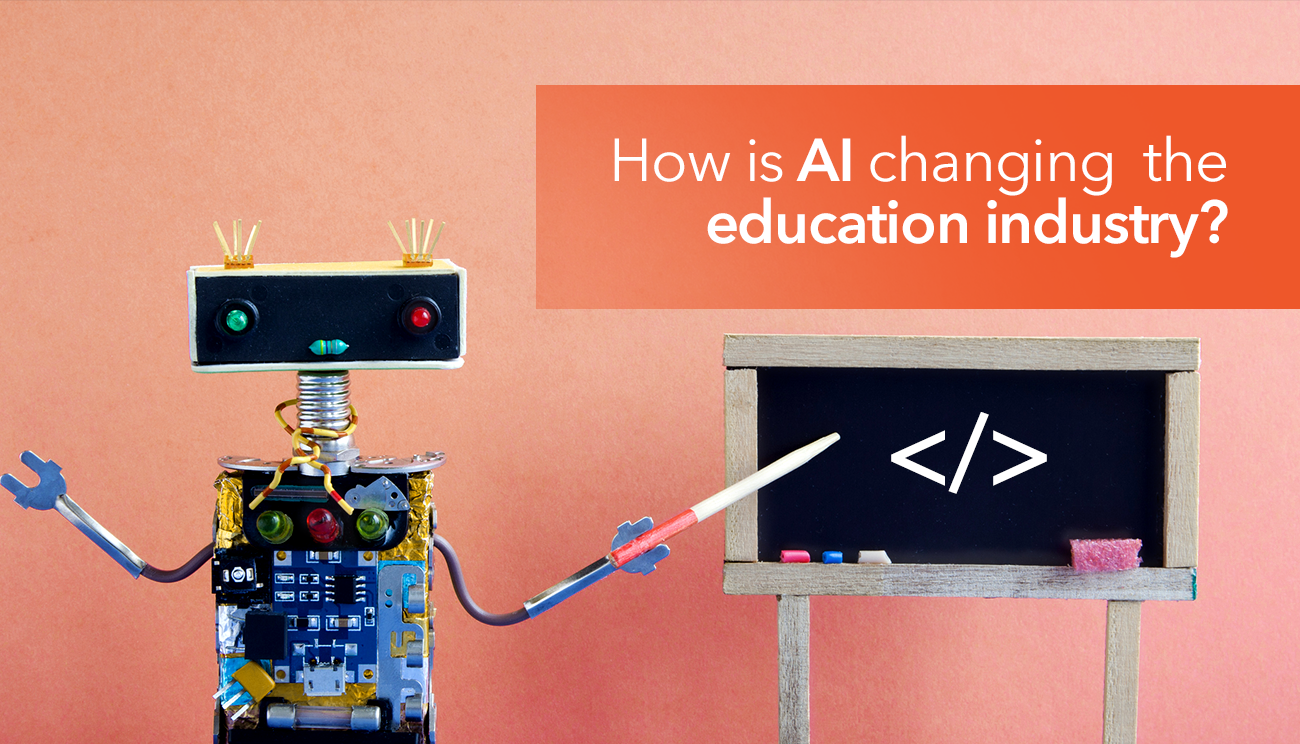You may have heard the term Artificial Intelligence or AI before. AI is the process of using technology to create intelligent machines that can perform tasks that humans normally perform. Some of these tasks are: Speech recognition, learning, planning and problem solving. AI was developed to see if a machine could learn in order to pass this knowledge onto others. Machines retain information and become smarter over time and are not susceptible to memory loss, information overload or sleep deprivation, like humans are. AI soon made its way into schools and universities to assist teachers and learners on a daily basis. And now, let us take a deeper look into how AI is changing the education industry.
How has AI changed education?
Since AI has been around, it has changed the education industry in many ways. Some of these are:
Administrative processes made simpler
A big part of the educational process is admin. Educators have to keep track of attendance, record results, generate reports and keep track of students’ progress. This is a cumbersome task as each task needs to be performed multiple times. AI can be used to automate reports or inform the teacher of the students’ progress. For example, performance indicators could be set against which a student’s results could be evaluated to inform the teacher on which students need extra help. In the near future AI will also be able to mark not only multiple choice tests but written responses as well. This allows educators to focus on teaching and not on administration. This is only one of many examples of how AI is changing the education industry.
Virtual teachers outside of the classroom
When you are sitting in a class with 20 or so other students, it is hard to get the attention you need. Most students have access to a smartphone or a computer and these devices have access to loads of tools and resources which can be used to learn. Most phones have their own built-in AI in the form of a virtual assistant. You can ask a question to your phone and get an answer right away. For example, Samsung devices have Bixby and iPhones have Siri which are both AIs. So, through Artificial Intelligence, students can have virtual teachers when they are not in the classroom.
Personalised learning content
Textbooks often rely on computers for supplementary content. There is often a disconnect between the two. With AI, the text and the supplementary content can be integrated into one. This will make it possible for students to engage with study material that is individualized and suited to their needs. AI is also being used to condense text books into study guides to make learning quicker and more effective as well as provide chapter summaries, practice tests and flashcards.
While classrooms introduce students to new ideas and principles, there are multiple ways to learn. Some students may prefer visuals, while others learn best via audio methods. Incorporating AI into the learning process allows students to choose the learning style that suits them best.
We learn better by actually experiencing the concept first hand. An integral part of education is hands on learning but this can be time consuming and not easy to manage with a large group. Using Augmented Reality, or better known as AR, that is already on mobile devices, students can engage with various fields such as the human body or microscopic cells. Integrating AI into AR can provide learning in a fun way and is yet another example of how AI is changing the education industry.
The introduction of Artificial Intelligence into education is still new but already there are start-ups that are improving education by use of AI. There are many benefits to having AI in education. From virtual lessons and study guides to administration, it is clear that students, teachers and administrators will all benefit from Artificial Intelligence in education. As times goes on and as AI advances, these benefits will advance. Want to make your own AI? You can learn how to by taking one of HyperionDev’s part-time online coding bootcamps.


